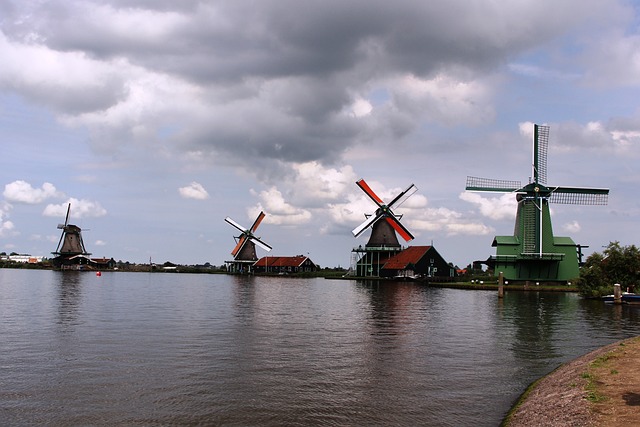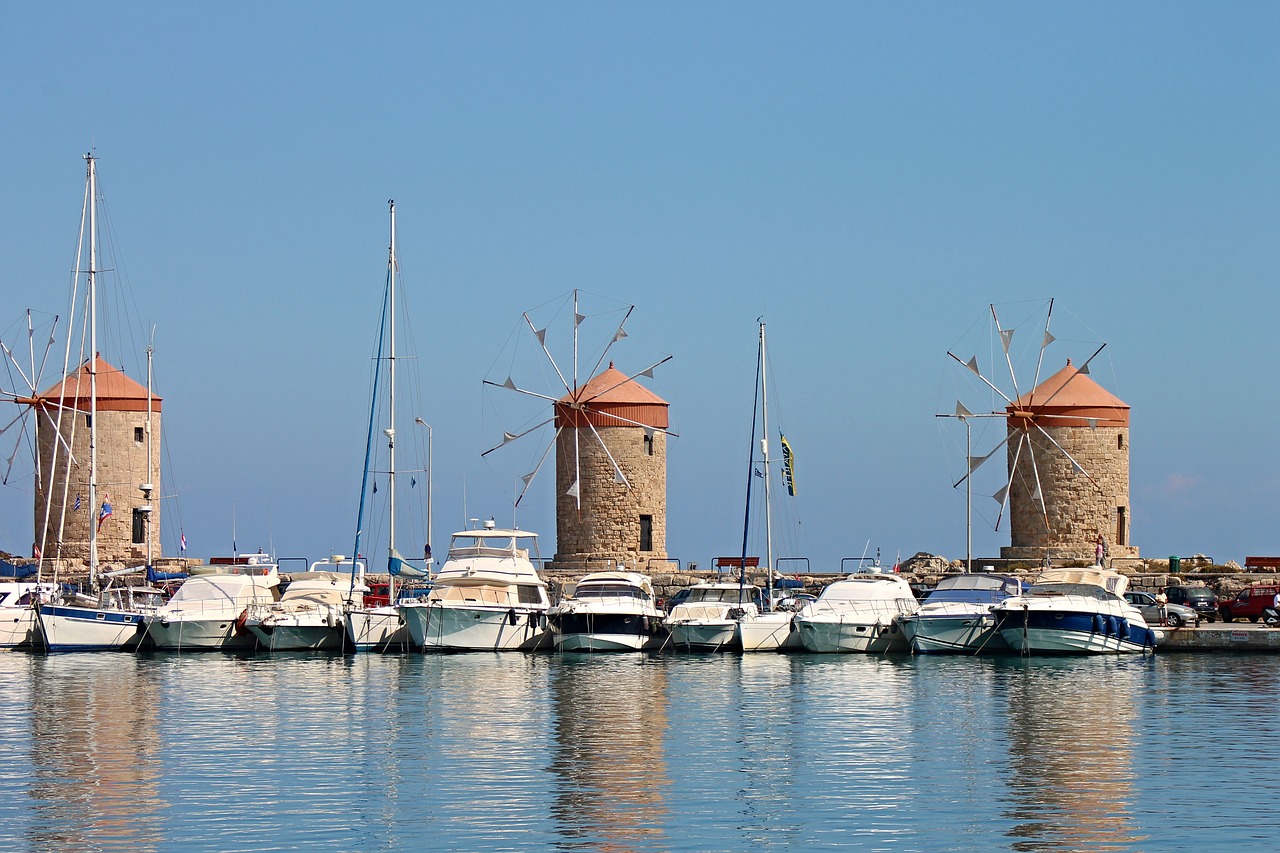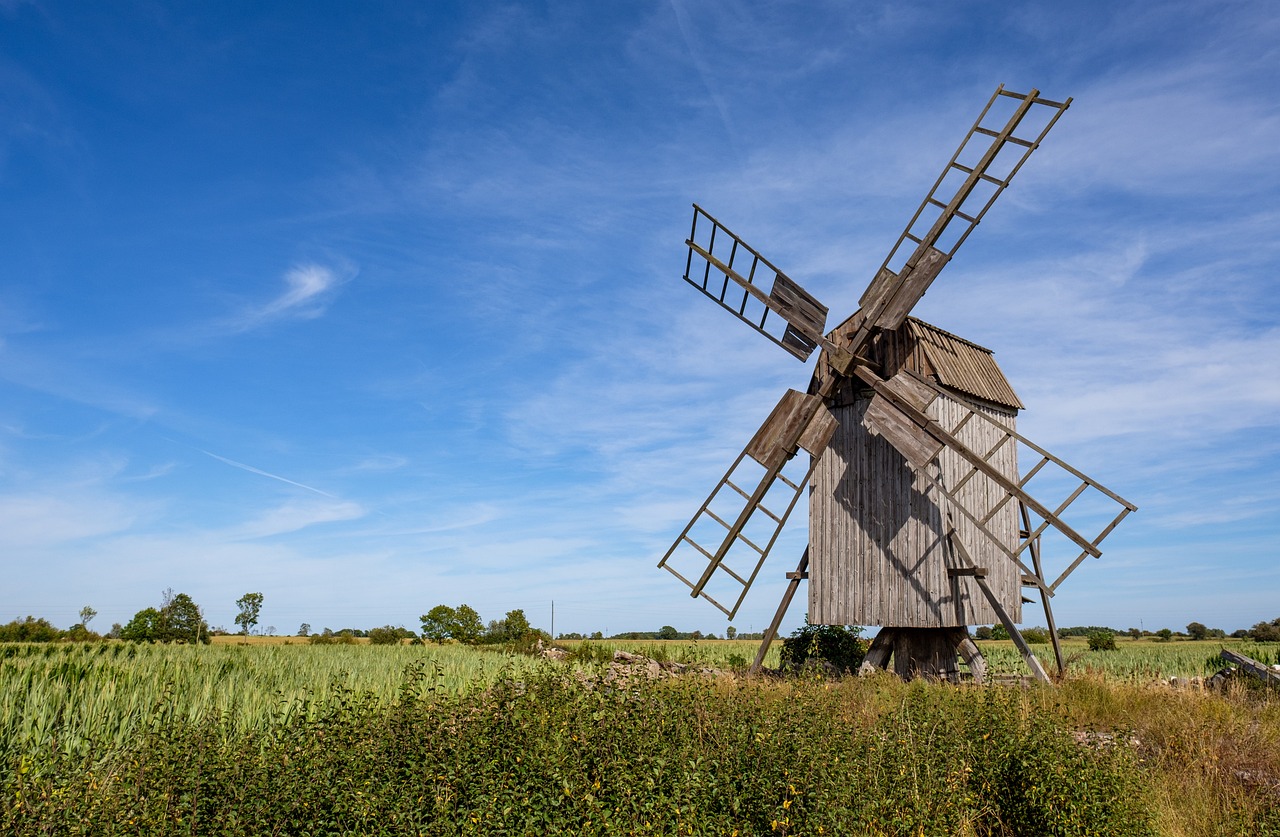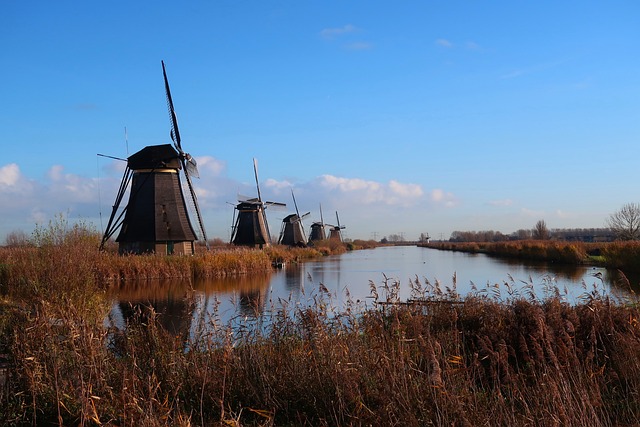People have used wind power for as long as they have had ships. The next step was to use wind power to make machines work. This was made by the Greek engineer Heron of Alexandria in the first century AD. He used the wind to power an organ. Since at least the 9th century, the first windmills were built in Persia. They were used to grind corn and move water.
In Europe, the first windmills are built in the 1100s. It’s possible that the crusaders got ideas from the vertical-axle windmills in the Middle East, but this isn’t very likely because the windmills in Europe were very different. In medieval Europe, all of the old windmills turned on horizontal wheels. After two hundred years, the famous Dutch windmills cleared parts of the Rhine River delta.
6 Famous Vintage Windmills Across The World
1. Zaanse Schans
The Zaanse Schans is a museum and open-air protection area on the bank of the river Zaan in the Netherlands, north of Zaandam. It shows the typical building of the area from the 17th and 18th centuries. It has black and green wooden traditional houses, several working windmills, and open-to-the-public craftsmen’s workshops.

Many industrial tasks were done by the windmills, such as cutting down trees, grinding grains, and making things like seed and nut oil.
2. Mykonos Windmills
One of the most well-known sights on the Greek island of Mykonos is its windmills. Five windmills in Mykonos Town are the first thing that people see when the ship gets close to the harbor. They are on a hill with a view of the area.
All together, there are 16 old windmills on Mykonos. Most of them were made by the Venetians in the 1600s and were used to grind wheat. As modern life came along, they became less and less useful until they were no longer used at all in the middle of the 20th century.
3. Rhodes Windmills
The Colossus of Rhodes, one of the Seven Wonders of the World, is thought to have been built in the Mandraki Harbor, which used to be the defense port of ancient Rhodes. As of now, Mandraki is still a natural area with bars by the water where you can watch yachts and fishing boats go by.

In the Greek port, the long wave breaker has three medieval windmills that were used to grind the grains that came off of merchant ships in the harbor.
4. Oland Windmills

Oland is the second biggest island in Sweden. It is mostly farmland and woods, with not many people living there. There are about 400 wooden windmills on Oland, and they have become a sign of the island. The main reason they were built was to meet the needs of private farms. Every one of them is now a protected landmark.
5. Windmills of La Mancha
Castilla-La Mancha is made up of the large, dry lands in the middle of Spain. It is a place with buildings from the Middle Ages, wine, and the famous windmills that were made famous by Miguel Cervantes’s novel Don Quixote. Don Quixote was written in two parts and published in 1605 and 1615. It is thought to be the first modern book and has been translated into so many languages that some people say only the Bible is available in more languages.
Some of the “giants” that Cervantes’ hero fought can be seen best in Consuegra, where a hill just outside of town is topped with old windmills.
6. Kinderdijk
There are still more than 1,000 old windmills in the Netherlands. Near the town of Kinderdijk (English: “Children’s dike”) is where you can find the most Dutch windmills.

Around 1740, 19 windmills were built to drain the polders, which are below sea level, of their extra water. They have been well taken care of and can still be used today, even though their job has been taken over by huge mechanical pumps. One of the best places to visit in the Netherlands is Kinderdijk.



